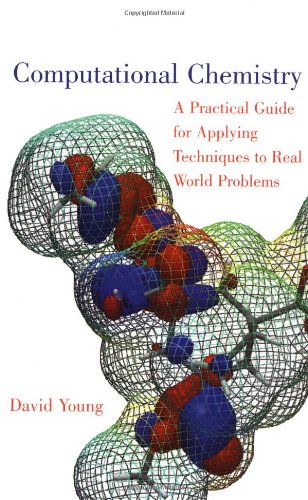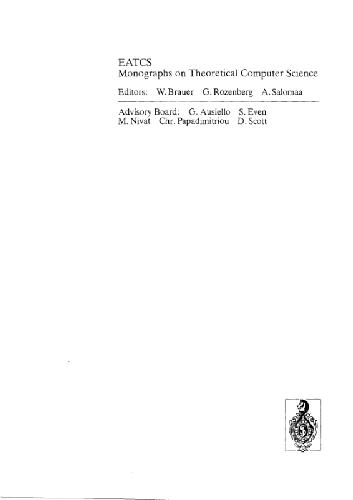Jacob Fish, Ted Belytschko9780470035801, 9780470510841, 0470035803
Focusing on the formulation and application of the finite element method through the integration of finite element theory, code development, and software application, the book is both introductory and self-contained, as well as being a hands-on experience for any student.
This authoritative text on Finite Elements: Adopts a generic approach to the subject, and is not application specific In conjunction with a web-based chapter, it integrates code development, theory, and application in one book Provides an accompanying Web site that includes ABAQUS Student Edition, Matlab data and programs, and instructor resources Contains a comprehensive set of homework problems at the end of each chapter Produces a practical, meaningful course for both lecturers, planning a finite element module, and for students using the text in private study. Accompanied by a book companion website housing supplementary material that can be found at http://www.wileyeurope.com/college/Fish
A First Course in Finite Elements is the ideal practical introductory course for junior and senior undergraduate students from a variety of science and engineering disciplines. The accompanying advanced topics at the end of each chapter also make it suitable for courses at graduate level, as well as for practitioners who need to attain or refresh their knowledge of finite elements through private study.
Table of contents :
A First Course in Finite Elements……Page 4
Contents……Page 8
Preface……Page 14
1.1 Background……Page 18
1.2 Applications of Finite elements……Page 24
References……Page 26
2.1 Describing the Behavior of a Single Bar Element……Page 28
2.2 Equations for a System……Page 32
2.2.1 Equations for Assembly……Page 35
2.2.2 Boundary Conditions and System Solution……Page 37
2.3 Applications to Other Linear Systems……Page 41
2.4 Two-Dimensional Truss Systems……Page 44
2.5 Transformation Law……Page 47
2.6 Three-Dimensional Truss Systems……Page 52
References……Page 53
Problems……Page 54
3 Strong and Weak Forms for One-Dimensional Problems……Page 58
3.1.1 The Strong Form for an Axially Loaded Elastic Bar……Page 59
3.1.2 The Strong Form for Heat Conduction in One Dimension……Page 61
3.1.3 Diffusion in One Dimension……Page 63
3.2 The Weak Form in One Dimension……Page 64
3.3 Continuity……Page 67
3.4 The Equivalence Between the Weak and Strong Forms……Page 68
3.5.1 Strong Form for One-Dimensional Stress Analysis……Page 75
3.5.2 Weak Form for One-Dimensional Stress Analysis……Page 76
3.6.1 Strong Form for Heat Conduction in One Dimension with Arbitrary Boundary Conditions……Page 77
3.6.2 Weak Form for Heat Conduction in One Dimension with Arbitrary Boundary Conditions……Page 78
3.7.1 Strong Form for Two-Point Boundary Value Problems with Generalized Boundary Conditions……Page 79
3.7.2 Weak Form for Two-Point Boundary Value Problems with Generalized Boundary Conditions……Page 80
3.8 Advection–Diffusion……Page 81
3.8.1 Strong Form of Advection–Diffusion Equation……Page 82
3.8.2 Weak Form of Advection–Diffusion Equation……Page 83
3.9 Minimum Potential Energy……Page 84
3.10 Integrability……Page 88
Problems……Page 89
4 Approximation of Trial Solutions, Weight Functions and Gauss Quadrature for One-Dimensional Problems……Page 94
4.1 Two-Node Linear Element……Page 96
4.2 Quadratic One-Dimensional Element……Page 98
4.3 Direct Construction of Shape Functions in One Dimension……Page 99
4.5 Global Approximation and Continuity……Page 101
4.6 Gauss Quadrature……Page 102
Problems……Page 107
5.1 Development of Discrete Equation: Simple Case……Page 110
5.2 Element Matrices for Two-Node Element……Page 114
5.3 Application to Heat Conduction and Diffusion Problems……Page 116
5.4 Development of Discrete Equations for Arbitrary Boundary Conditions……Page 122
5.5 Two-Point Boundary Value Problem with Generalized Boundary Conditions……Page 128
5.6 Convergence of the FEM……Page 130
5.6.1 Convergence by Numerical Experiments……Page 132
5.6.2 Convergence by Analysis……Page 135
5.7 FEM for Advection–Diffusion Equation……Page 137
References……Page 139
Problems……Page 140
6 Strong and Weak Forms for Multidimensional Scalar Field Problems……Page 148
6.1 Divergence Theorem and Green’s Formula……Page 150
6.2 Strong Form……Page 156
6.3 Weak Form……Page 159
6.4 The Equivalence Between Weak and Strong Forms……Page 161
6.5 Generalization to Three-Dimensional Problems……Page 162
6.6 Strong and Weak Forms of Scalar Steady-State Advection–Diffusion in Two Dimensions……Page 163
Problems……Page 165
7 Approximations of Trial Solutions, Weight Functions and Gauss Quadrature for Multidimensional Problems……Page 168
7.1 Completeness and Continuity……Page 169
7.2 Three-Node Triangular Element……Page 171
7.2.1 Global Approximation and Continuity……Page 174
7.2.2 Higher Order Triangular Elements……Page 176
7.2.3 Derivatives of Shape Functions for the Three-Node Triangular Element……Page 177
7.3 Four-Node Rectangular Elements……Page 178
7.4 Four-Node Quadrilateral Element……Page 181
7.4.2 Derivatives of Isoparametric Shape Functions……Page 183
7.5 Higher Order Quadrilateral Elements……Page 185
7.6.1 Linear Triangular Element……Page 189
7.6.2 Isoparametric Triangular Elements……Page 191
7.6.3 Cubic Element……Page 192
7.6.4 Triangular Elements by Collapsing Quadrilateral Elements……Page 193
7.7 Completeness of Isoparametric Elements……Page 194
7.8 Gauss Quadrature in Two Dimensions……Page 195
7.8.1 Integration Over Quadrilateral Elements……Page 196
7.8.2 Integration Over Triangular Elements……Page 197
7.9.1 Hexahedral Elements……Page 198
7.9.2 Tetrahedral Elements……Page 200
References……Page 202
Problems……Page 203
8.1 Finite Element Formulation for Two-Dimensional Heat Conduction Problems……Page 206
8.2 Verification and Validation……Page 218
8.3 Advection–Diffusion Equation……Page 224
Problems……Page 226
9.1 Linear Elasticity……Page 232
9.1.1 Kinematics……Page 234
9.1.2 Stress and Traction……Page 236
9.1.3 Equilibrium……Page 237
9.1.4 Constitutive Equation……Page 239
9.2 Strong and Weak Forms……Page 240
9.3 Finite Element Discretization……Page 242
9.4 Three-Node Triangular Element……Page 245
9.4.1 Element Body Force Matrix……Page 246
9.4.2 Boundary Force Matrix……Page 247
9.5 Generalization of Boundary Conditions……Page 248
9.6 Discussion……Page 256
9.7 Linear Elasticity Equations in Three Dimensions……Page 257
Problems……Page 258
10.1.1 Kinematics of Beam……Page 266
10.1.2 Stress–Strain Law……Page 269
10.1.3 Equilibrium……Page 270
10.1.4 Boundary Conditions……Page 271
10.2 Strong Form to Weak Form……Page 272
10.2.1 Weak Form to Strong Form……Page 274
10.3.1 Trial Solution and Weight Function Approximations……Page 275
10.3.2 Discrete Equations……Page 277
10.4 Theorem of Minimum Potential Energy……Page 278
10.5 Remarks on Shell Elements……Page 282
Problems……Page 286
11.2 Preliminaries……Page 292
11.3 Creating a Part……Page 293
11.4 Creating a Material Definition……Page 295
11.5 Defining and Assigning Section Properties……Page 296
11.8 Applying a Boundary Condition and a Load to the Model……Page 297
11.9 Meshing the Model……Page 299
11.12 Solving the Problem Using Quadrilaterals……Page 301
11.13 Refining the Mesh……Page 302
11.16 Configuring the Analysis……Page 304
11.17 Applying a Boundary Condition and a Load to the Model……Page 305
11.18 Meshing the Model……Page 306
11.20.1 Plate with a Hole in Tension……Page 307
11.22 Creating a Part……Page 309
11.23 Creating a Material Definition……Page 310
11.24 Defining and Assigning Section Properties……Page 311
11.27 Applying a Boundary Condition and a Load to the Model……Page 312
11.28 Meshing the Model……Page 314
11.29 Creating and Submitting an Analysis Job……Page 315
11.31 Refining the Mesh……Page 316
A.1 Rotation of Coordinate System in Three Dimensions……Page 320
A.3 Taylor’s Formula with Remainder and the Mean Value Theorem……Page 321
A.4 Green’s Theorem……Page 322
A.5 Point Force (Source)……Page 324
A.6 Static Condensation……Page 325
A.7 Solution Methods……Page 326
Iterative Solvers……Page 327
Conditioning……Page 328
Problem……Page 329
Index……Page 330
Colour Section……Page 337







Reviews
There are no reviews yet.